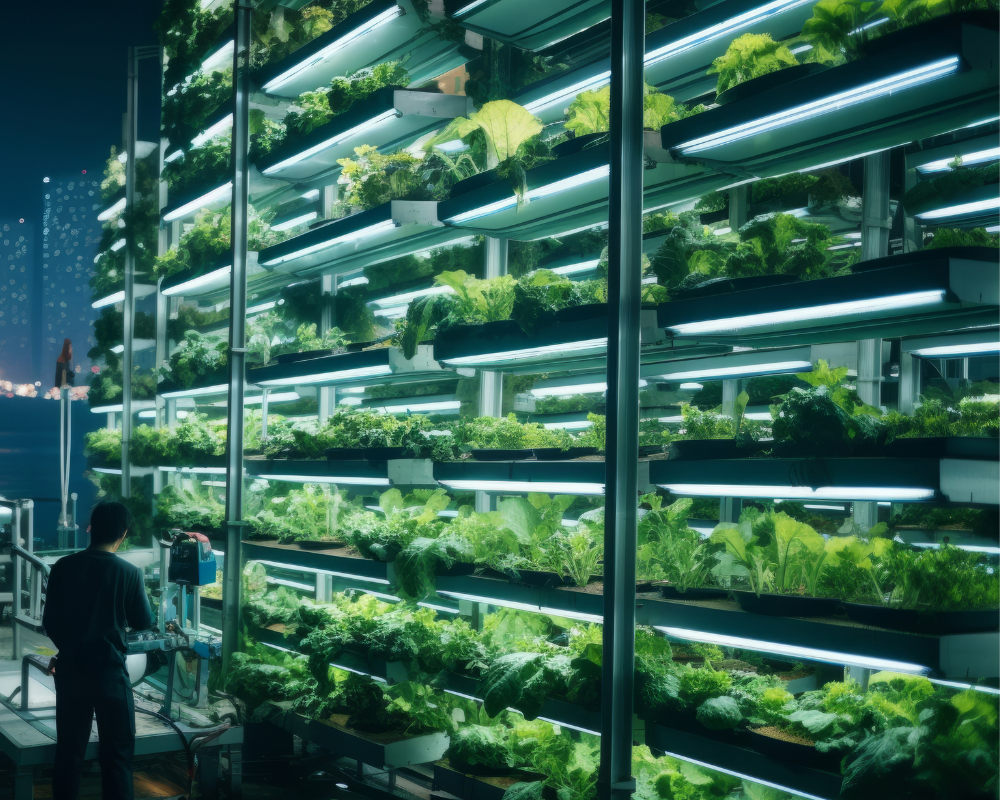June 20, 2025 By: JK Tech
Imagine you’re doing your weekly grocery run aisle and spot a packet of oranges with a QR code that reads, “Scan to Meet the Farmer.” Curiosity gets the best of you, and now you know that these very oranges were raised by Arthur Sheppard, a farmer who lives in Cameron, Texas, and harvested them just last week. What once seemed like a distant, anonymous supply chain now felt personal and transparent. This is the capability of FoodTech in action.
Technology was believed to only belong to our screens, clouds, or at most, in our pockets, but certainly not on our plates. With the rise of artificial intelligence, robotics, and blockchain, technology is now shaping the taste, freshness, and origin of what we eat. We have officially entered the era of FoodTech, where innovation doesn’t just power our devices, it also influences our diets.
What is FoodTech?
FoodTech combines science, digital tools, and data-driven systems to improve efficiency, production, and transparency at every step of the food chain, from the farm to the grocery store shelf.
Whether it’s about growing your greens indoors with the help of algorithms, 3D printing plant-based steaks, or customizing your dinner through AI. FoodTech will eventually change what we eat, how we produce it, and why we choose it.
Real-World Use Cases:
Infarm, a Germany-based company, specializes in modular vertical farming systems installed inside urban supermarkets and restaurants. It uses IoT sensors and cloud-based controls to accurately manage growing conditions for herbs and leafy greens, saving up to 95% water compared to traditional farming. The company has expanded to other countries and raised over $400 million to scale its operations globally.
Novameat, is a Spanish company that makes 3D-printed plant-based steaks. Their technology uses pea protein and beet juice to replicate the texture and appearance of real meat fibers. This innovative approach offers an alternative to conventional meat, reducing environmental impact. Novameat has attracted investment from notable venture funds, including New Crop Capital, which also backs leading alternative protein companies.
NotCo, is a Chilean company that uses an AI platform called “Giuseppe” which can analyze the molecular composition of animal protein and replicate it with plant-based ingredients to recreate similar tastes and textures. Their products include plant-based milk, burgers, and creations like “NotTurtle Soup,” designed to raise awareness about endangered species. NotCo has gained popularity and raised funds from players like Kraft Heinz and Jeff Bezos’s venture fund.
HelloFresh is a meal kit delivery service that employs advanced data analytics and machine learning techniques to forecast demand, make tailored meal recommendations, and optimize ingredient sourcing. This data-driven approach helps prevent food waste by delivering just the right portions to its customers.
Why This Matters?
FoodTech is opening new doors to tackle some of the biggest problems in how we grow and consume food. The global population is expected to hit 10 billion by 2050, which is an alarming threat to the sustainability and efficiency of our current food systems. Traditional farming and distribution methods are going to cost more resources than we can afford to spare. That’s where FoodTech would step in by using technology that makes food production smarter, sustainable, and more transparent. It has the potential to build scalable solutions that can help feed more people smartly without putting extra pressure on the planet.
As per ReFED, AI-driven food waste solutions like Winnow have helped reduce kitchen waste by up to 76%, while the overall FoodTech industry is forecasted to grow to $467.99 billion by 2033.
Investors and corporates are paying attention to:
- Chipotle’s $100M venture fund is betting on FoodTech.
- The global food waste management market is expected to reach $121B by 2030.
- Startups like Apeel and Too Good To Go are saving millions of meals annually.
What does the future hold?
Opening your fridge and instead of contemplating what to cook, you will be simply tapping on an app that can scan your leftovers, and instantly, it will then suggest a personalized recipe, not just based on what’s available, but also on your nutritional needs, allergies, and fitness goals. Now take it a step further, your continuous glucose monitor (CGM) syncs with the app to tailor a meal that stabilizes your blood sugar, while your smartwatch adjusts your hydration reminders based on weather and activity levels.
This may not be a wider practice today but a probable norm within this decade, where a person can map every vegetable and grain that goes into a meal, cook it precisely to meet their calorie or nutritional needs and be able to track its digestion, just with a tap of a button or a simple voice command.



